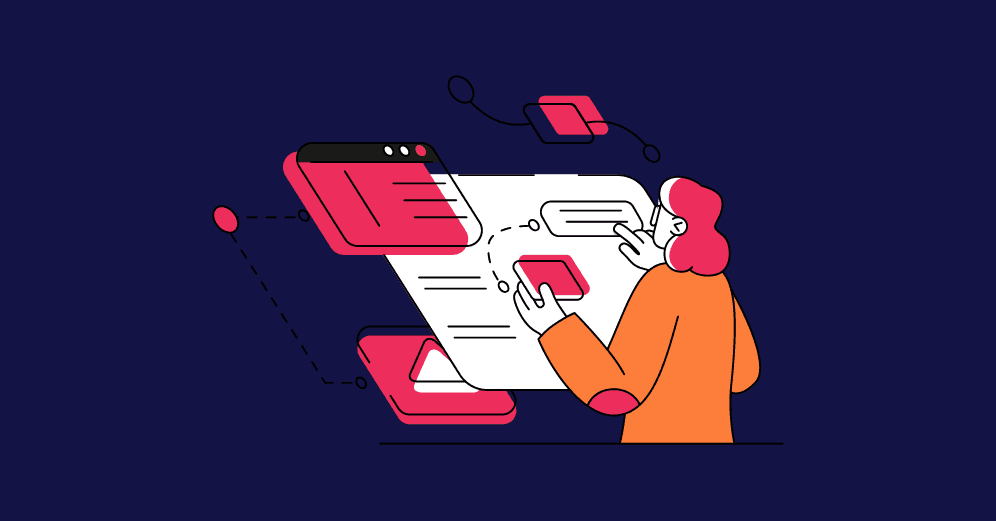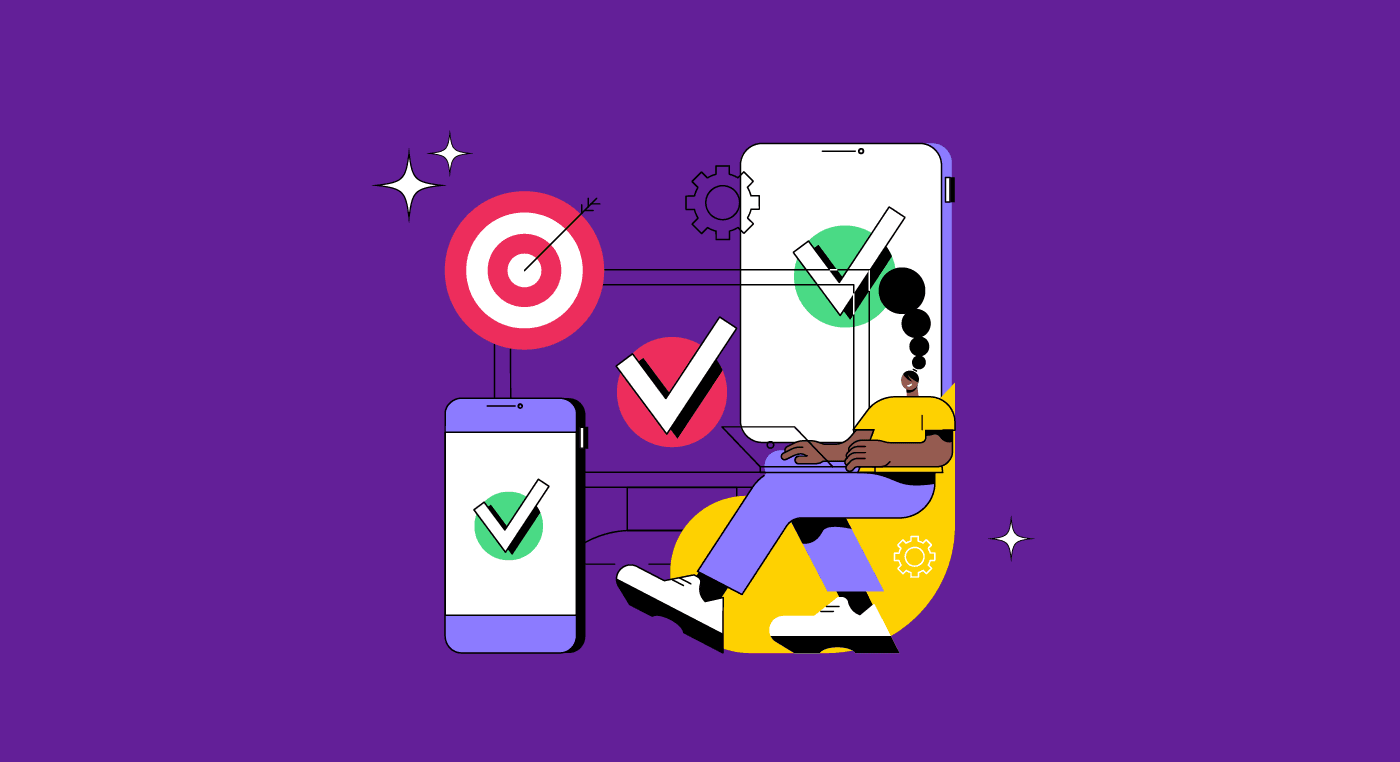The idea of redesigning a product comes up. But one should always question before jumping into this complex assignment: is a redesign really necessary? Based on what research has this request been made? What are the risks of opting for a redesign?
Continue in the article to find out the answers to these questions!
Why do you wish to redesign?
When a customer requests a product redesign, the first thing to do is simply ask why.
Some customers may feel that their website or app has become outdated or could be better. But they don't necessarily have any research or proof that the current design is underperforming.
There are cases where the client just got tired of the current design or felt that their competitors' websites looked better.
Therefore, as a designer, it is essential to question why the redesign was requested in the first place.
Reasons for a redesign

Before you start the assignment, you need to understand exactly why the customer has requested the redesign.
Thus, for the redesign to be effective, the company needs data and information to help support the project.
You should also understand the goals the company wants to achieve from the redesign; what outcomes do they expect? This will help you stay on the right track.
We can cite some examples of indicators that companies can use to verify the need for a redesign:
- Decreased sales and revenue;
- Low conversion rate;
- Reduced market share;
- Decreased click-through rate;
- Decreased number of product downloads;
- Reduced user time on the interface.
The above indicators are just some examples. Each company should analyze the indicators that best apply to its business.
If the analysis shows that there is indeed an opportunity to improve the company's results by changing the current design, you'll be sure that the request makes sense.
If, on the other hand, the analysis shows that there's no need for a redesign, and you end up doing it anyway, the company will probably be frustrated with the results as all effort and resources would have been in vain.
Reading tip: Wireframe: How To Get Started?
Gathering information

Redesigning a product is not that simple. Simply modifying for the sake of change is not enough and, in fact, pointless. Instead, the redesign should be based on research, studies, and tests.
So, conducting new user research and aligning the results with the company's objectives is fundamental.
The idea is to get back to the planning and strategic level of product design.
The User Journey is a tool that can help a lot in this planning phase. With this tool, it is possible to map all user interaction points and identify flaws and improvement opportunities.
Reading tip: Benchmarking: How To Conduct One?
A new design or updates to the current product?
Perhaps the first solution that comes to mind is to redesign the entire product to improve its performance.
However, you should first evaluate the possibility of making incremental changes to cover performance gaps in the product.
Before thinking about doing the whole redesign, take a moment to reflect on the following:
What if minor changes can do the trick?
Based on research, user journey, and indicator analysis, do you feel that making a small change would be enough to meet company goals?
Maybe there is no need to change a product 100%. Instead, a small change might be much more effective.
Am I stuck on a visual style bias?
We should avoid changing an entire design because of our aesthetic opinions.
At the slightest possibility of a redesign, we may feel inclined to use various tools and solutions to change the product's aesthetics, believing, without a fundamental basis, that such changes will improve performance.
The important thing, again, is to analyze the data and make the decision based on it;
What will give me more results: a redesign or minor improvements?
What is the cost-benefit of a redesign? Besides higher financial costs, there is the risk that a large part of the users will not like the new design; or will be very critical of the changes.
Users usually do not like change. Therefore, if modest improvements are sufficient, opt for them rather than a complete redesign.
Jakob Nielsen, one of the founders of NN/g, gives some tips to reduce user aversion to change. Check the video below:
When is a redesign really necessary?
Although it is risky and costly, there are situations when you just have to make a redesign, for example:
- When incremental changes no longer improve the product: A product may have undergone several changes throughout its history, and it's no longer viable to postpone a redesign;
- The product technology has become outdated: the product technology may be obsolete and no longer support improvements that meet the users' needs. Thus, a total redesign may be a way to continue with the product;
- The product does not meet user expectations: after several unsuccessful attempts to improve user interaction, and the company's goals are constantly changing, the solution may be to redesign the product;
- The user personas have changed: users have specific needs, and your product has to align with the expectations of its current users. So you may have to change: the words used to describe the product or service, how the website is organized (according to users' mental models), and the design elements and functionality of your website, among other features;
- The website's purpose has changed: you don't need to do an entire site redesign each time the marketing goals are adjusted, but it's advisable to revisit this to be sure the website is still aligned with the newest marketing plans.
While the above situations lead to a redesign, it is always advisable to analyze all data and research for the decision to be as assertive as possible.
Reading tip: Unintended Consequences: The Unforeseen Impacts of Technology
What's your loss with an unnecessary redesign?
Just as the effectiveness of a new design or an incremental improvement can bring good results, a redesign can have the opposite effect if carried out unnecessarily.
- Losing users: users generally do not like changes because it means they will have to learn again. A significant change in the design of a product can reduce the number of users. So if you're going through a redesign, keep your brand image consistent and handle the redesign through a test website, so you can still maintain your daily performance and ensure revenue.
- High costs: redesigning takes time, money, and effort. So it can cause delays or disrupt the business for a while. Therefore, make sure to plan it properly and handle it with care;
- Making the product and user experience worse: this is certainly one of the biggest challenges of a redesign. If a new design is carried out without research and the necessary attention and analysis, the final result can hinder the user experience. This way, instead of improving the product, it would only worsen it.
A redesign is a touchy subject. Companies and designers themselves should not redesign without solid arguments and research. The decision to entirely change the design of a product should always be related to research and solid arguments that support this decision.








